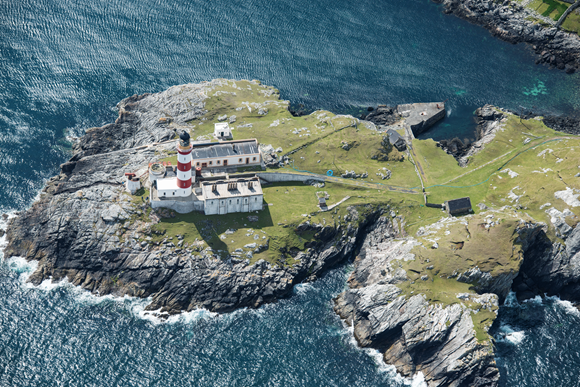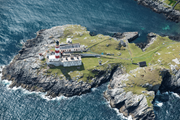
18 November 2021, 14:00
Historic Environment Scotland (HES) launches its first dedicated climate change adaptation plan

Historic Environment Scotland launches Climate Ready HES – the organisation’s ground-breaking plan dedicated to preparing for the risks and impacts associated with climate change.
Historic Environment Scotland has today, Thursday 18 November, launched its new climate adaptation plan. ‘Climate ready HES’ sets out a series of actions that HES will undertake in order to prepare for, and review the risks and impacts associated with climate change, as Scotland experiences more extremities in weather and continues to move towards net zero.
The plan is a flagship deliverable of HES’s ambitious Climate Action Plan (2020-2025) and operates alongside other key climate action commitments, such as HES’ ambitions to achieve net-zero emissions by 2045.
Accelerating climate change is already posing a threat to Scotland’s historic environment and cultural heritage sites. Changes to the climate are increasing the frequency and intensity of physical climate risks, illustrated by the flash-flooding across Edinburgh in July 2021, which was the result of unprecedented heavy rainfall and directly impacted Edinburgh Castle.
In developing the plan, HES established a cross-organisational group to carry out a strategic level climate risk assessment which identified key climate risks where the organisation believes further action is required. The approach taken to carry out this assessment was informed by tools and guidance developed by Adaptation Scotland and its partners.
This new adaptation plan details HES’s primary adaptation response to the climate risks of concern identified. This is a series of priority actions including committing appropriate resources to climate change adaptation, mainstreaming ‘adaptation’ action into HES plans and policies, and integrating climate risk assessments into all relevant decisions the organisation takes.
These priority actions are crucial to reduce the impact of physical climate risks where possible, like extreme weather events and spread of invasive species, and to address additional risks that the organisation will be exposed to as society responds to the climate crisis and transitions towards a low-carbon economy.
Alex Paterson, Chief Executive of Historic Environment Scotland (HES), said:
“The need to be ‘climate ready’ and to proactively prepare for the risks and impacts associated with climate change has never been clearer – 2020 and 2021 have been marked by many notable extreme weather events occurring around the globe, with the influence of climate change clear to see.
“We hope that this plan will not only help to improve our organisation’s own resilience to the risks and impacts of climate change, and in turn that of Scotland’s historic environment, but also that it will bring benefits to the wider sector.”
Anna Beswick, Adaptation Scotland Programme Manager at Sniffer welcomed the new plan, saying:
“‘Climate Ready HES’ tells a compelling story. It offers deep insights on the climate risks that are affecting the organisation and provides a very strong response to the climate crisis.
“The process of developing the strategy is as important as the document itself and I am delighted to see the high-level of engagement from across the organisation. This collective commitment is why Climate Ready HES is amongst the most progressive climate adaptation responses in Scotland. It will also be crucial in implementing the strategy.
“We congratulate our HES colleagues on reaching this important milestone and look forward to working together in the years ahead to enable Scotland to adapt to climate change.”
The plan can be viewed on the HES website here: www.historicenvironment.scot/climateready
Contact Information
Zoë Carpenter
zoe.carpenter@hes.scot
Notes to editors
About the Climate Ready HES Plan
The plan outlines 28 key climate risks of concern to HES and that require further action that were identified in the strategic level climate risk assessment. Many of these climate risks have also been identified in the Independent Assessment of UK Climate Risk, published by the Climate Change Committee in June 2021.
The climate risks identified group into five risk categories:
- Physical climate risks on our organisation’s physical assets
- Physical climate risks on the natural capital of our Properties in Care
- Physical climate risks disrupting our day-to-day operations
- Varied climate risks impacting the safety and wellbeing of our people
- Key transition risks that would likely impact delivery of our core functions
These risks will be addressed by implementing our ‘adaptation response’ that includes 10 priority actions, which are detailed in the plan.
A detailed methodology document will be released in the coming weeks that outlines the steps we took in preparing this plan.
About Historic Environment Scotland
- Historic Environment Scotland (HES) is the lead body for Scotland’s historic environment, a charity dedicated to the advancement of heritage, culture, education and environmental protection. It is at the forefront of researching and understanding the historic environment and addressing the impacts of climate change on its future, investigating and recording architectural and archaeological sites and landscapes across Scotland and caring for more than 300 properties of national importance. HES is also the lead on delivering Scotland's strategy for the historic environment, Our Past, Our Future.
- Historic Scotland, Stòr, trove.scot, The National Collection of Aerial Photography (NCAP), The Engine Shed, Stirling Castle and Edinburgh Castle are sub-brands of Historic Environment Scotland.
- Historic Environment Scotland is a registered Scottish Charity. Scottish Charity No. SC045925
- Keep up to date with news from Historic Environment Scotland and register for media release email alerts. You can unsubscribe at any time by following the unsubscribe link included in every email.
- You can follow Historic Environment Scotland on Facebook, Instagram, LinkedIn and our blog.


